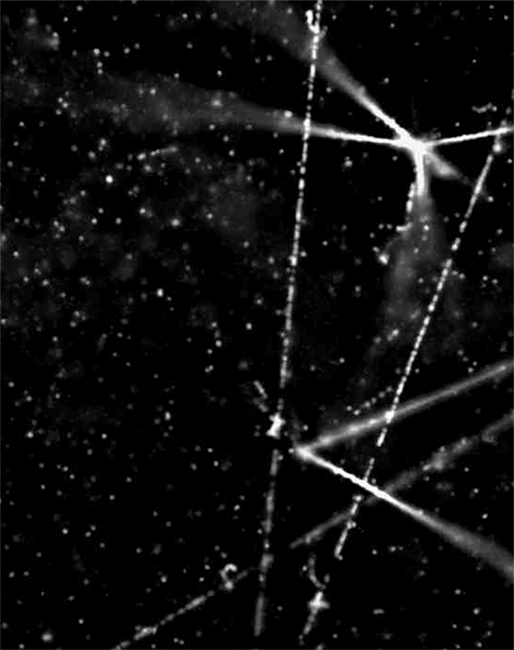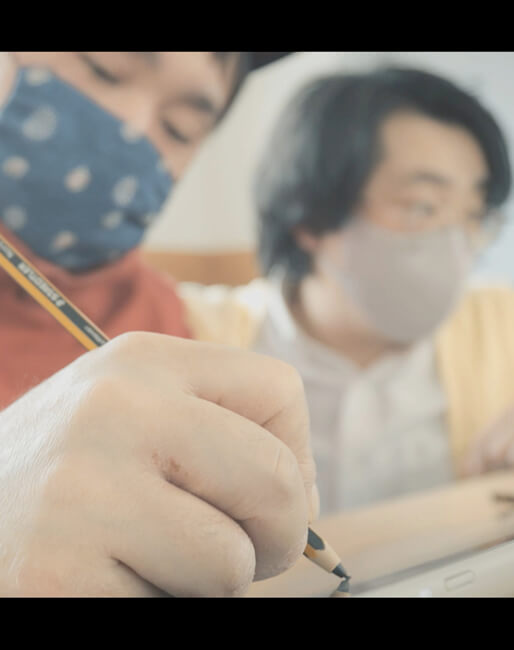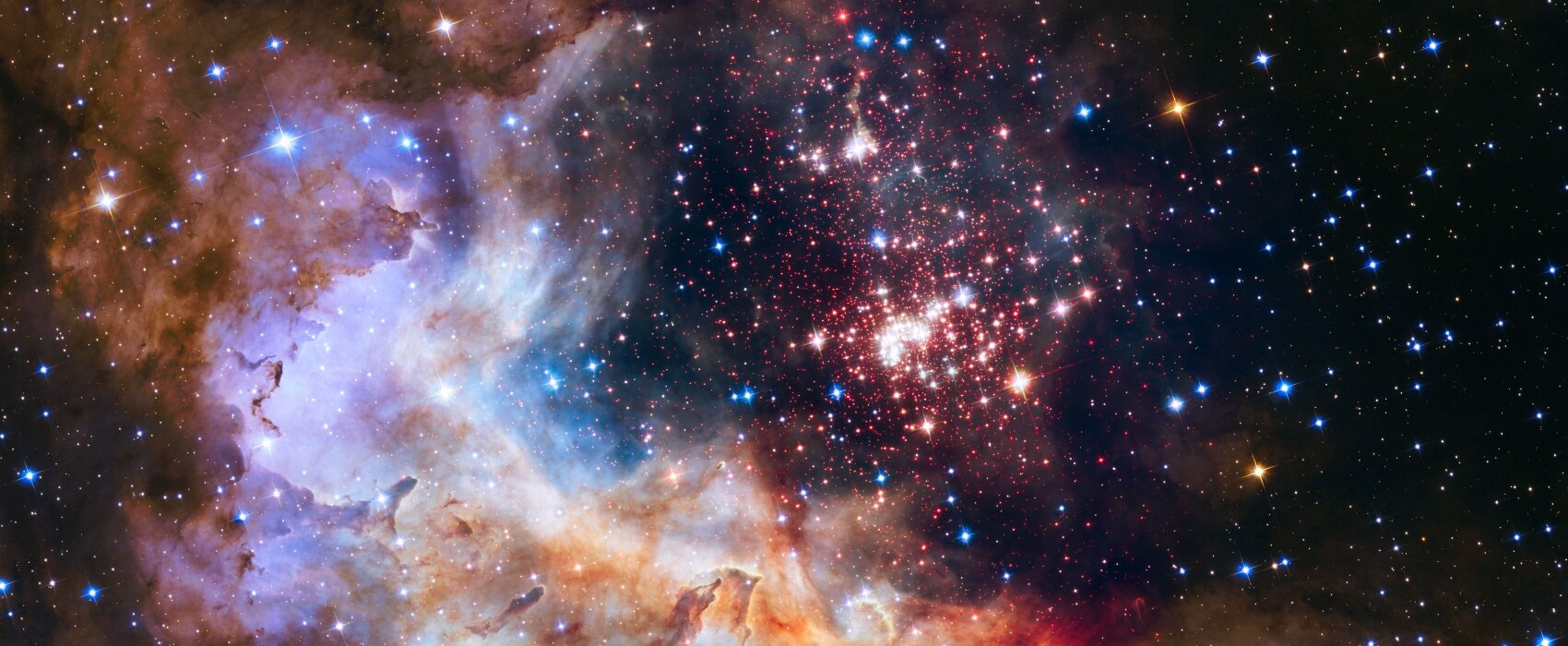
Meanings Behind “Cosmic Boléro”.
Where is the 27-Hour Long “Creative Chaos” Leading Us?
The opening and closing sessions of Connected Ink 2021 share the same theme. Where is the creative chaos leading us? The program is designed as follows; the question cast in the opening will come back to its starting point as an echo in a new format after a 27-hour journey. Creative chaos and its all implications - towards which future are we heading? Have a deep look into the theme of this event crystallized in its opening and closing sessions.

The Universe - Ultimate Symbol of Creative Chaos?
With this year’s theme of “the Universe”, Connected Ink is being held for the 6th time since its launch in 2015. As the event centers around creative chaos where creative energies from different fields of arts run into each other, the Universe fits perfectly into the picture as an appealing keyword. “Creative chaos” is an indispensable characteristic of the Universe. Especially so when you consider how it was created.
Big-Bang Theory. This theory, first presented by George Gamow et. al., has become the standard model of cosmology physics. According to it, in an ultra-short time period called the Planck Epoch immediately after the Big Bang, everything in the currently observable Universe was presumably packed into a minute “dot” smaller than an atomic nucleus. Four basic forces, i.e. gravity, electromagnetic force, strong nuclear force and weak nuclear force were not yet differentiated when the dot started to expand. This tiny dot was at the origin of anything that exiosts in the Universe today. But the mechanism of the “birth of the Universe” is not yet fully understood even by the most advanced cosmophysics today.

Science and Art Surrounding the Universe
Humans have always been fascinated by outer space and felt the urge to understand it since the early days of human history. Some Babylonian tablets dating back to ca. 3000 BC show inscriptions on. By looking up at the open sky, we humans are bound to find beauty in it like in a work of art. The sense of awe is closely related with religion. In early civilization, therefore, stories were spun about constellations of twinkling stars in the sky and gave rise to endless stories with their roots in the myths and legends of polytheistic religions. The Universe had been an object of observation and a source of inspiration but for a long time remained a mystery beyond quantification or comprehension. All this changed with the publication of Einstein’s Theory of General Relativity in 1916 which marks the beginning of scientific cosmology. “Equipped with his five senses, man explores the Universe around him and calls the adventure science” is a famous quote of Edwin Powell Hubble after whom the Hubble Space Telescope orbiting Earth is named. Science and art were once inseparable twins. Today we are witnessing a time in which creations are newly born out of interactions of science and artists. Advancing science sheds new light on how the Universe really is by making the invisible visible and gives artists new stimuli. We humans are fascinated by the inspiring beauty of the Universe - ever since it unfolded on Earth.

“Cosmic Boléro” - Solo Players Coming Together in a Grand Finale
Both opening and closing sessions are tuned to the“ sounds of the Universe”, a sonification art that renders muons (microparticles) from outer space audible. On top of such cosmic sounds, a message converted from outer space interpreted by the latest technology, various live contents are superimposed: orchestral music, drawings by professional artists and physical expressions presented by performers on stage. Event’s logo created by Satoru Kobayashi, an artist at the Rumbini Art Museum (Hanamaki City, Iwate) travels high in the sky over the globe in 27 hours and comes back with comments and illustrations from around the world. Kobayashi’s works of art are characterized by their distinctive expression with uniquely shaped letters and give the impression of being directly connected with the Universe. Expressions of various artists are painted on a canvas of cosmic tunes with everything eventually converging to a climax - creative chaos. Nobu Ide, CEO of Wacom, the host of Connected Ink 2021, draws an analogy between this multi-level collaboration among artists in different fields and “Boléro”, an orchestra piece originally composed for a ballet by Maurice Ravel. Nobu’s thoughts are expressed in the following piece of poem.
“Cosmic Boléro”
Like a mighty river flowing in space
from which all human creations originate and to which one day they return,
endlessly continuing for millions of years,
like a barely audible sound of clapping wings that germinates a seed at just a twinkling moment
marking a quiet beginning in all serenity,
then growing inch by inch with every rotation of the Earth,
while creative chaos prevails in every corner of the globe
with humans dancing, drawing, playing music and singing with their whole hearts and full dedication.
People’s brain-squeezing thoughts and discussions leading to empathy and mutual learning,
an endless cycle which subtly packs up
multiple layers like a mille-feuille pastry,
eventually orchestrating the grand finale of a cosmic boléro,
the final destination of ultimate chaos yet profound silence beyond the earthly realm
when creations are returning to their human creators.
Nobu Ide
Nobu tells us: “There are two types of human creations, those made out of the sense of being directly connected with nature and those born out of “confrontation” with nature. Their process and results may not always be positive. Everyone engaged in creation and expression must a least once have experienced the feeling of being “overwhelmed” by something beyond human might. Facing an infinite space spreading above us, we may feel small and forlorn, and feel senseless in our daily routine at times. Nevertheless, the wheels of human expression will keep rolling. Though having a sense that there are things beyond our comprehension and verbalization, we humans never stop creating and our creations stay with us. My wish is to share such thoughts with our community.”
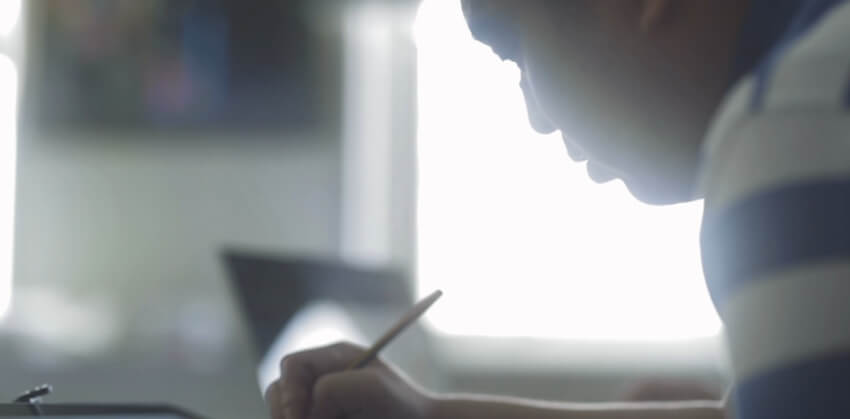
Embracing Human Creations and Expressions with Open Arms
Kobayashi’s art works are born - apparently in a natural way - through his unique technique accomplished through trial and error in his creations. When you see the artist in action fully immersed in his work and expressing the Universe without being aware of its existence, you will perceive him as if he were a drifting spaceship exploring the open Universe. On the other hand, there are artists who challenge themselves like warriors for turning their perception of the vast Universe into physical expressions as a form of performing art. And on the other, there are artists who weave art pieces as naturally as breathing, and artists who see a ray of light in the end of a long tunnel of challenges and confrontations. Is there any difference between them?
A certain poet once commented about his work, saying “of course, the work is mine. But the feeling from its creation is not that words are born out of myself but rather that a vast accumulation of words from the past manifests becomes alive through my selection”.
Coming back to two types of artists, their difference lies only in their methodology and directness in expressions how they grow their works from the wellspring of their creation, say the Universe and nature. In short, there is no essential difference in act of creation. Furthermore, the process and their works of creation can be said to be of equal value. Connected Ink 2021 embraces all people engaged in creation and expression - with love and with open arms.
editor / writer_ Chikara Kawakami
RELATED SESSIONS
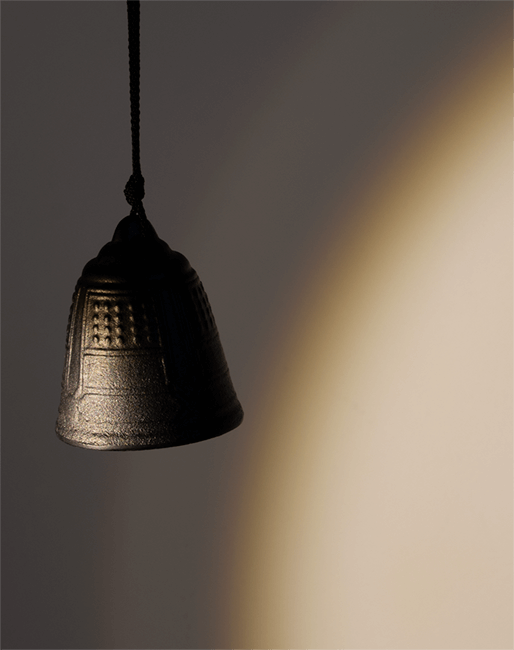
Satoru Kobayashi • Atelier Mayura of Rumbini Art Museum
Tomoya Kikuchi • Japan Philharmonic Orchestra
Dr. Yuri Tanaka • Tokyo University of the Arts
Pavle Dinulović • University of Arts in Belgrade
Dr. Umut Kose • CERN (Conseil Européen pour la Recherche Nucléaire)

